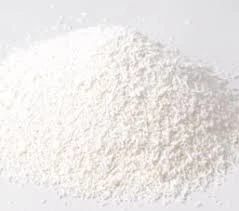
The Role of Gelling Agents in Food Texture and Preservation Techniques
The Role of Gelling Agents in Food
Gelling agents play a crucial role in the food industry, providing texture, stability, and an appealing mouthfeel to various products. These substances are capable of thickening, gelling, or forming emulsions, contributing to the overall sensory experience of food. Various types of gelling agents exist, each with unique properties and applications. This article aims to explore the different types of gelling agents, their functions, sources, and significance in food production.
Types of Gelling Agents
Gelling agents can be broadly classified into natural and synthetic categories. Natural gelling agents include agar, pectin, gelatin, and carrageenan. These agents are derived from plants or animals and are often favored for their health benefits and compatibility with natural foods.
1. Agar Derived from red algae, agar is a popular substitute for gelatin, particularly in vegetarian and vegan diets. It is used in jellies, desserts, and as a thickening agent in soups and sauces.
2. Pectin This natural polysaccharide, found in fruits, is commonly used in making jams and jellies. Pectin is effective in binding with sugar and acid, allowing it to gel and create the desired consistency in preserves.
3. Gelatin Extracted from animal collagen, gelatin is widely used in a variety of food products, such as gummy candies, marshmallows, and desserts. Its gelling ability makes it ideal for creating a smooth texture in mousses and panna cotta.
4. Carrageenan Another seaweed derivative, carrageenan is often used in dairy products and plant-based alternatives. It helps in maintaining the stability of emulsions and enhances the mouthfeel of beverages.
On the other hand, synthetic gelling agents, such as modified starches and xanthan gum, are crafted through chemical processes. These agents offer specific advantages, including improved shelf life and stability under varying temperatures.
Functions of Gelling Agents
gelling agent in food

Gelling agents serve multiple functions in food products
1. Texture Enhancement One of the primary roles of gelling agents is to modify the texture of food. They can create a firmer body, making products more palatable and enjoyable.
2. Stabilization In emulsions, gelling agents help to prevent the separation of ingredients. They enhance the stability of products like salad dressings, keeping oil and water mixed.
3. Water Binding Gelling agents possess the ability to retain water, thereby improving the moisture content and extending the shelf life of food.
4. Visual Appeal The glossy, smooth appearance achieved through the use of gelling agents can significantly enhance the visual appeal of food items. This is particularly important in desserts and confections.
Health and Safety Considerations
While gelling agents are generally recognized as safe (GRAS) by food safety authorities, their use should be moderated. Some individuals may have allergies or intolerances to specific gelling agents, such as gelatin or carrageenan. Additionally, the consumer trend towards cleaner labels has led to increased scrutiny regarding artificial additives versus natural alternatives.
Conclusion
Gelling agents are indispensable in the food industry, contributing significantly to the texture, stability, and sensory experience of a wide range of products. As consumer preferences shift towards natural and health-conscious options, the demand for plant-based gelling agents continues to rise. Understanding the various types of gelling agents and their functions can aid food manufacturers in developing innovative products that meet market expectations while ensuring quality and safety. As the food industry evolves, gelling agents will undoubtedly play a pivotal role in shaping the future of culinary creations.
-
Aluminum Hydroxide: Quality Gels & Dried Gel AntacidNewsAug.31,2025
-
Buy High-Quality Trichloroisocyanuric Acid for Sale | TCCA 90% SupplierNewsAug.30,2025
-
Pure Sodium Dichloroisocyanurate Dihydrate | Powerful DisinfectantNewsAug.29,2025
-
Industrial Chemicals: Quality & Purity for Every IndustryNewsAug.28,2025
-
Nitrile Rubber Honoring Strict Production StandardsNewsAug.22,2025
-
Aspartame Ingredients Honoring Food Safety ValuesNewsAug.22,2025
-
Fertilizer for Balanced Plant NutritionNewsAug.22,2025
Hebei Tenger Chemical Technology Co., Ltd. focuses on the chemical industry and is committed to the export service of chemical raw materials.
-

view more DiethanolisopropanolamineIn the ever-growing field of chemical solutions, diethanolisopropanolamine (DEIPA) stands out as a versatile and important compound. Due to its unique chemical structure and properties, DEIPA is of interest to various industries including construction, personal care, and agriculture. -

view more TriisopropanolamineTriisopropanolamine (TIPA) alkanol amine substance, is a kind of alcohol amine compound with amino and alcohol hydroxyl, and because of its molecules contains both amino and hydroxyl. -

view more Tetramethyl Thiuram DisulfideTetramethyl thiuram disulfide, also known as TMTD, is a white to light-yellow powder with a distinct sulfur-like odor. It is soluble in organic solvents such as benzene, acetone, and ethyl acetate, making it highly versatile for use in different formulations. TMTD is known for its excellent vulcanization acceleration properties, which makes it a key ingredient in the production of rubber products. Additionally, it acts as an effective fungicide and bactericide, making it valuable in agricultural applications. Its high purity and stability ensure consistent performance, making it a preferred choice for manufacturers across various industries.





